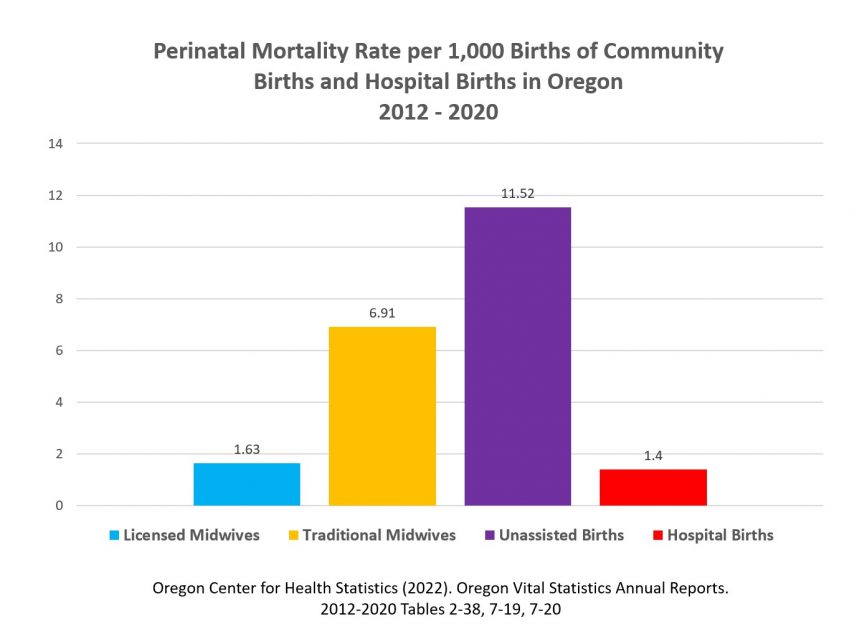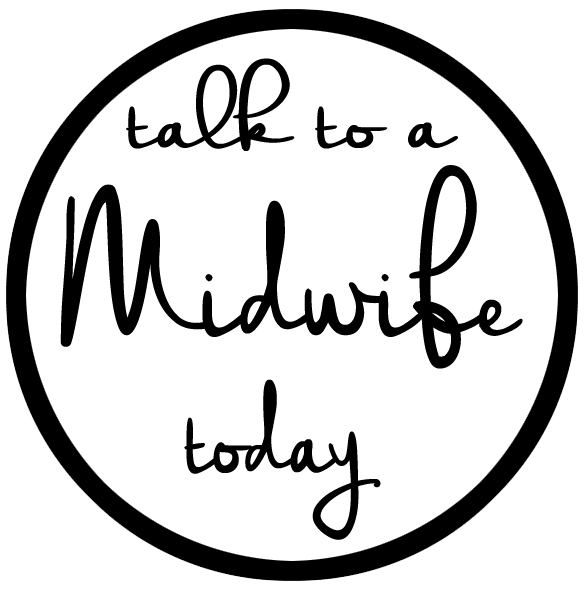Using birth certificates, the Oregon Dept of Vital Statistics compiles useful data for looking at the risks of different choices for birth attendants and settings. The height of each bar in this graph represents the risk to the baby during birth, with the higher bars representing more risk. The blue bar represents planned home birth with a licensed midwife in Oregon, and the red bar is for women who gave birth in the hospital. The higher risk options in the middle represent women who had unassisted births or who delivered with an unlicensed midwife. As you can see, this data shows us that the risk of hospital birth is comparable to the risk of planned home birth with a licensed Oregon midwife.

As the Oregon Midwifery Council noted, “COMMUNITY BIRTH OUTCOMES VARY. When people think about home birth, birth centers, and midwives, they sometimes assume that the outcomes are the same across the board. But outcomes for the [mother]and baby vary depending on the health of the person, whether there are complications in the pregnancy, whether the birth is attended by a midwife or unassisted, the training and practices of the midwife attending the birth, and the availability of smooth and safe transfer to the hospital if needed. In Oregon, birth certificate data lets us look at outcomes for planned community births by provider type, including unassisted births and births that involved a hospital transfer. Since we’re the only state that collects this information, we want to share it with birthing families and midwives to support decision-making.
One thing that stands out in this data is that the risk of a baby dying around the time of birth in a planned community birth is low with licensed midwives but it’s higher with traditional midwives and even higher in planned unassisted births. This population-level data can’t tell us the causes of these differences but they do show that there is more to the safety of community birth than just location.”
Curious about birth at home with a licensed midwife? You can call (541) 908-9188 and learn more today.
But what if there is an emergency at my birth?
We handle any emergencies or high-risk situations that arise. It starts with prenatal care to make sure both you and baby are staying healthy and low risk, ensuring you are within the low-risk criteria for Oregon midwife home birth risk guidelines. This care is one of the many reasons Oregon Birth Certificate Data proves that the risk of home birth with a licensed midwife is safe, and comparable to the risks of hospital birth. In the case of a complication during the birth, we are trained in neonatal resuscitation and CPR, we carry IV fluids, and anti-hemorrhagic drugs (Pitocin/oxytocin, Cytotec/misoprostol, methergine)- and we don’t hesitate to transfer care if it’s necessary for safety.
When appropriate, midwifery care also provides the option to address complications and emergencies during pregnancy and birth in a way that is more holistic and friendly to both mother and baby. For example, heavier postpartum bleeding or a retained placenta can be addressed in some cases with botanicals instead of standard anti-hemorrhagic drugs (but we have those too in case they are needed!). If the baby needs resuscitation, a hospital will clamp the cord and take the baby across the room, leaving you without your baby and unable to see what’s happening. But we carry equipment and have the experience so we do most resuscitations WITHOUT separation from the mother OR premature cord clamping. You can expect little touches like this throughout your whole experience, where the focus is on delivering the perfect BALANCE of HOLISTIC & MODERN MEDICAL care that is just right for you.
In any case, the vast majority of women who plan to give birth at home will not need to transfer care. And the vast majority of the women who do need a transfer for medical care will not need an ambulance or emergency services.


